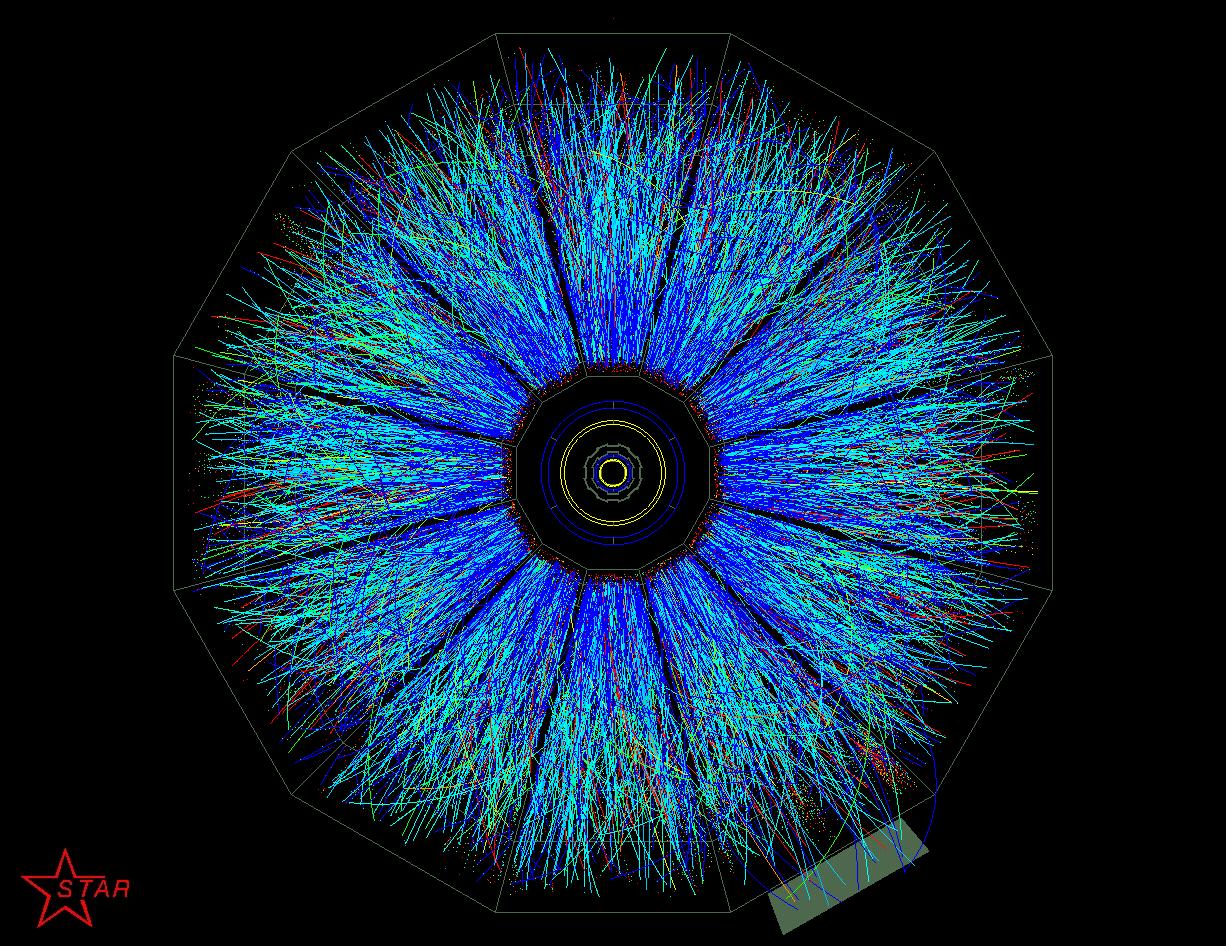
First AuAu Collision in STAR at Full RHIC Energy
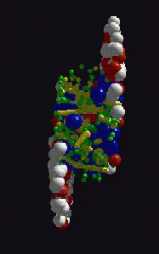
Collision of Au+Au simulation by the research collaboration group UrQMD. The two gold nuclei, as viewed in the laborartory frame of reference, are Lorentz contracted along the direction of travel. Neutrons are depicted in white, protons in red. Pions, the most abundant of the produced particles, are green.
Click on the image for animated view (MPEG format, 867K).
 |
STAR - Solenoidal Tracker At RHIC |
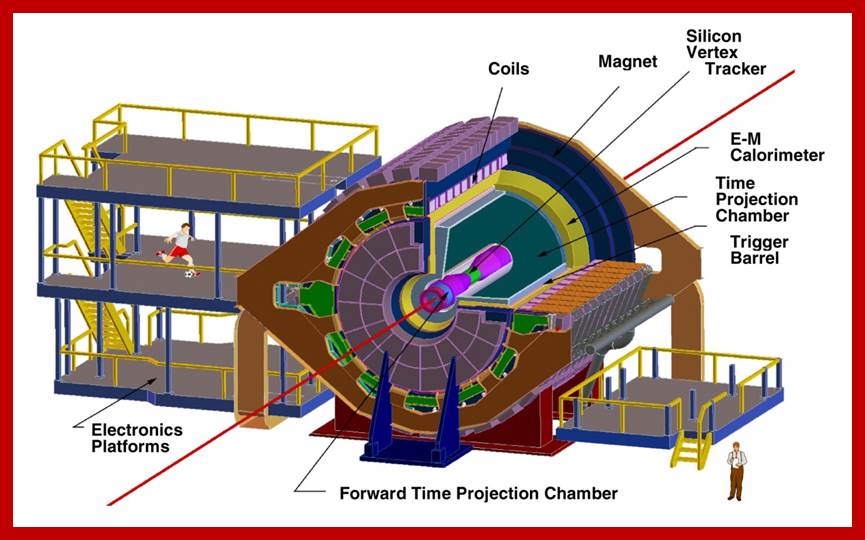
STAR is a first generation experiment at the Relativistic Heavy Ion Collider (RHIC) at BNL. The Purdue HENP group has played a central role in the development, testing, and installation of the Time-Projection Chamber, the main detector of the STAR experiment. STAR had taken data with proton-proton, proton-gold, deuteron-gold, copper-copper, copper-gold, and gold-gold collisions at center-of-mass energies of 20, 39, 62, 130, and 200 GeV per nucleon-nucleon pair. Collisions between heavy nuclei, especially gold beams of 100 GeV/nucleon, provide conditions sufficient for the production of the quark-gluon plasma phase of matter.
The Purdue HENP group assumes many responsibilities in the STAR experiment. The group played a leadership role in physics analysis. We analyzed particle production using macroscopic quantities of statistical mechanics (temperature, chemical potentials, etc.) and concluded that relative particle abundances are fixed by a single temperature of about 165 MeV. We also found that the produced particles are moving collectively with a high average radial speed, about half of the speed of light. We pioneered the analysis of medium modifications to energetic jets (collimated shower) of hadrons due to interactions between jets and the high temperature and density medium. We discovered the long-range longitudinal correlations with the triggered jet and the angular broadening of the back-to-back partner jet in relativistic heavy-ion collisions. We analyzed the production of heavy quarks and collective anisotropic flow of both light quarks and heavy quarks. We studied symmetry breaking observables pertinent to matter-antimatter asymmetry of the universe.
 |
CMS - Compact Muon Solenoid at LHC |
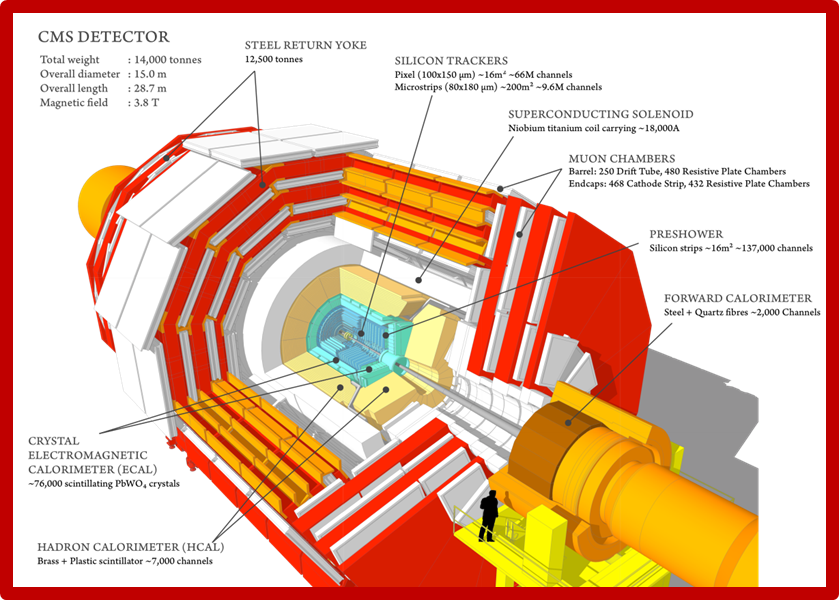
CMS is a large high energy particle physics experiment at the Large Hadron Collider (LHC) at CERN. CMS has an integral program of relativistic heavy ion collisions. The energies of the heavy ion beams are 2.76 and 5.02 TeV per nucleon-nucleon pair. CMS has taken data with proton-lead and lead-lead collisions.
We analyzed the long-range longitudinal correlations in proton-lead collisions. We analyzed bottom quark (and the more difficult charm quark) jet production. We measured the production rate of the charmed hyperon, and the anisotropic collective flow of the charmed meson.
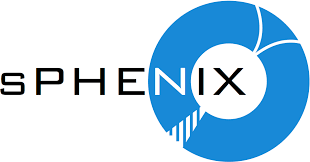 |
sPHENIX at RHIC |
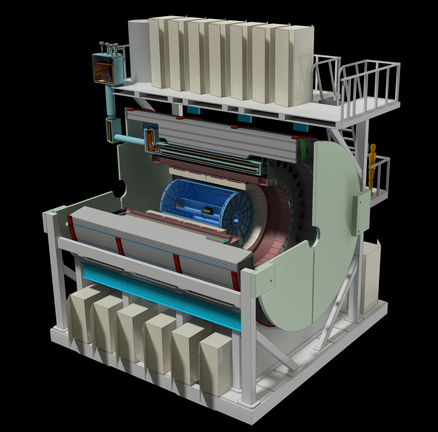
sPHENIX is a new detector planned for the RHIC facility at BNL. sPHENIX will provide state-of-art capabilities for studies of the strongly interacting quark-gluon plasma using jet and heavy-flavor observables. The goal of sPHENIX is to understand the microscopic structure of the plasma and reveal how its strongly interacting nature arises from the underlying interactions of quarks and gluons described by quantum chromodynamics.